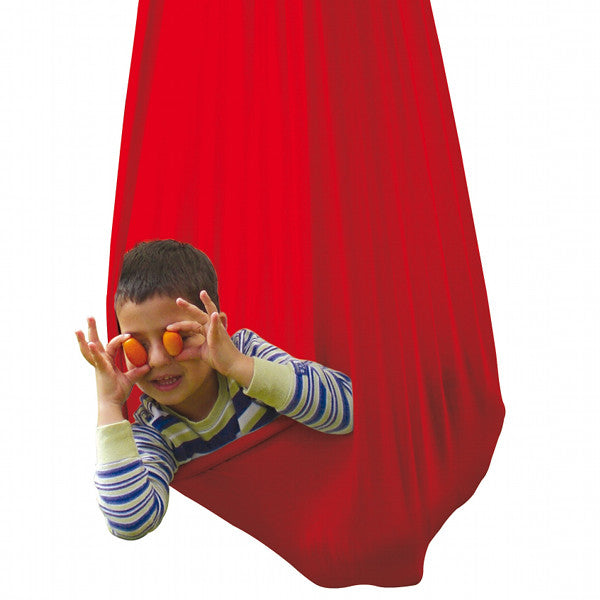
Most of us have no problem combining all our senses. For autistic children (and grownups) however, it’s a mighty challenging task. Processing stimuli from the senses of sight, smell, sound, touch, taste, balance and body is overwhelming. Those suffering from autism will often withdraw to avoid overstimulation, or try to sort out the input from their senses with self-developed soothing mechanisms and repetitive behaviours.
A significant amount of occupational therapy for autism focuses on sensory integration through specially designed programs. Some of the greatest tools for sensory integration therapy for autism type disorders are various types of swings. People with various autism spectrum disorders such as Autism, PDD, ADHD, Asperger's, proprioceptive dysfunction and tactile defensiveness will benefit from using swings as part of their therapy.

Additionally, children and adults with Sensory Processing Disorders (also called Sensory Integration Disorders), especially those with proprioceptive or vestibular dysfunction, should definitely have sensory swings as a crucial element of their treatment. The benefits of the sensory swings can be two-fold. Children who find the smooth, swaying motion soothing, will relax and unwind while using it. However, children who have a vestibular dysfunction will feel uneasy while in the therapy swing and might initially protest its use. For them, swing therapy is more about regaining equilibrium and learning to tolerate vestibular stimuli.
The motion of swinging restores balance to the vestibular system, provides proprioceptive input (deep pressure) and generally helps autistic-spectrum children feel more “in balance”. The soothing motion of swinging soothes, relaxes and increases concentration. Children who have trouble focusing on tasks such as reading or math, might find it easier to concentrate sitting in a hammock chair, their bodies engaged in a soothing motion. Setting up a swing in the home is easy and doesn’t require a large investment. A hammock, hammock chair, hanging bag or a therapy platform swing are all relatively inexpensive, easy to find and don’t take up a lot of room. Making a platform swing out of a hammock is an easy do-it-yourself project, with instructions available here. Put one in the kid’s room, playroom or family room for a retreat or a therapy corner for an autistic child.


